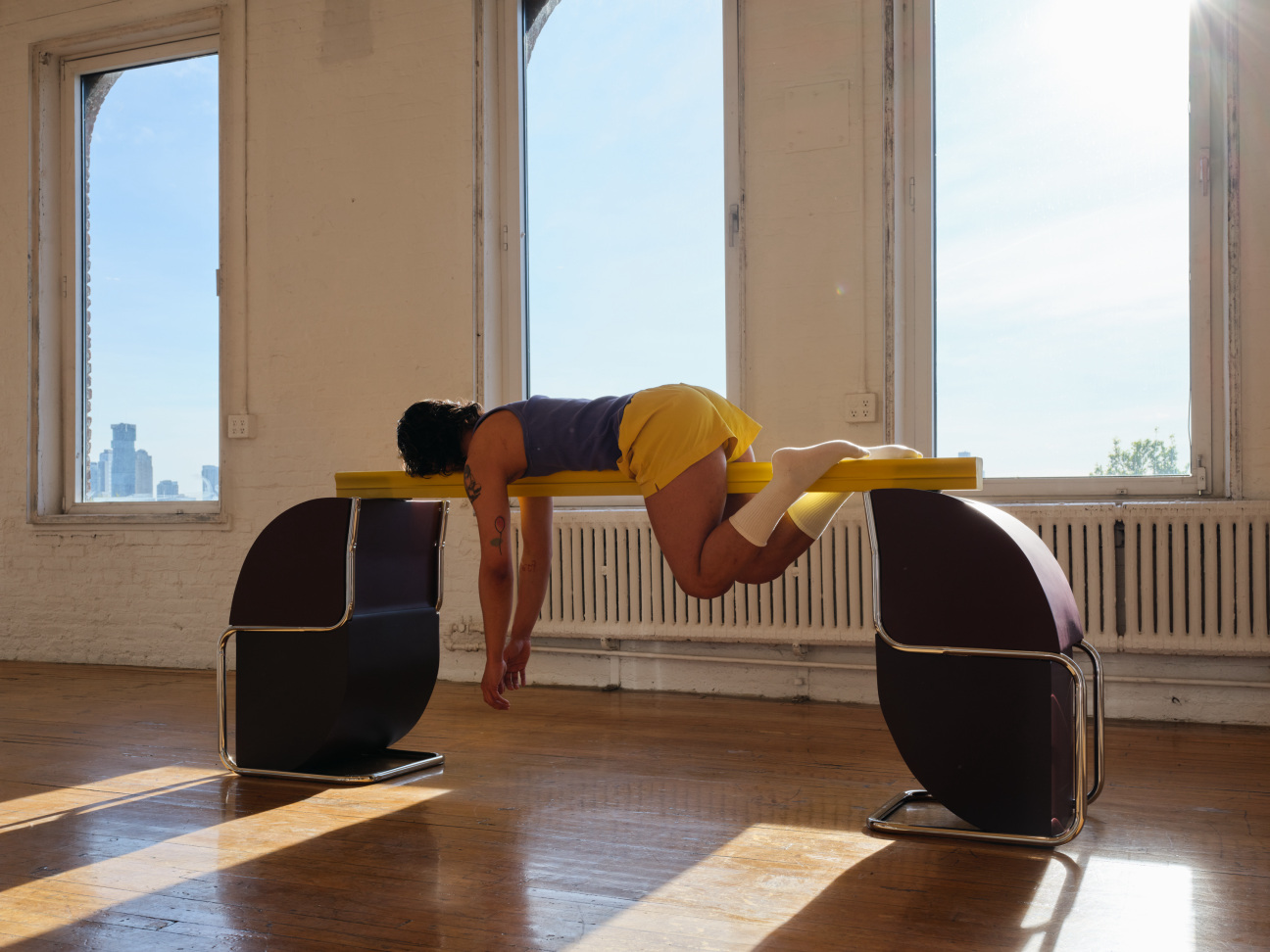
Gordon Hall
The Kitchen at Westbeth | 163B Bank Street, 4th Floor
Through May 31
Have you ever noticed that a pair of chairs facing away from each other evoke a body on all fours? In Gordon Hall’s new exhibition, “Hands and Knees” at the Kitchen, five such configurations form the core cast of actors. For these simply composed sculptures in vibrant colors—bright red, dark purple, light blue—the artist has removed the seats and backs of chrome cantilevered chairs, negating their customary utility as furniture and opening them to non-normative purposes. Distributed throughout the sun-flooded loft space, the works suggests submission, whether in pleasure, pain, or prayer—states that are by no means mutually exclusive.
Coming to visual art with a dance background, Hall investigates how objects invite bodily interaction, recalling the work of postmodern choreographer Simone Forti, who has explored movement in relation to sculptural constructions or props. There is also a palpable affinity between the sleek, minimal aesthetic of Hall’s work and that of Roni Horn’s paired sculptures, which, with their almost identical components, prompt an awareness of difference across objects and bodies.
Unannounced performances during gallery hours on scheduled days introduce human bodies into Hall’s arrangements. Suspended in a state of waiting during my visit to the show, I witness how two muscular people carry performers in on stretcher-like sculptures, which they place horizontally on the chair forms, literally topping them, allowing them to serve as supports after all. These “recliners,” as the artist calls the performers, who are each approximately Hall’s height (a casting requirement), rest on their sides, backs, or bellies. (Some poses are clearly more comfortable than others). I find myself contemplating how my body might occupy these sculptures—folded over, stretched across them. How do we create places of repose in a society that fetishizes productivity, where seating increasingly disappears from public space, rendering it hostile to those the government deems undesirable?
Walking from the Kitchen afterward, I pass Reggie Fitzgerald Triangle where an older woman has pulled two chairs to face each other. Having found a patch of sun, she reclines in one chair while resting her feet on the other, surrendering herself to rest. She and Hall, I think, are on to something similar.—Ksenia M. Soboleva
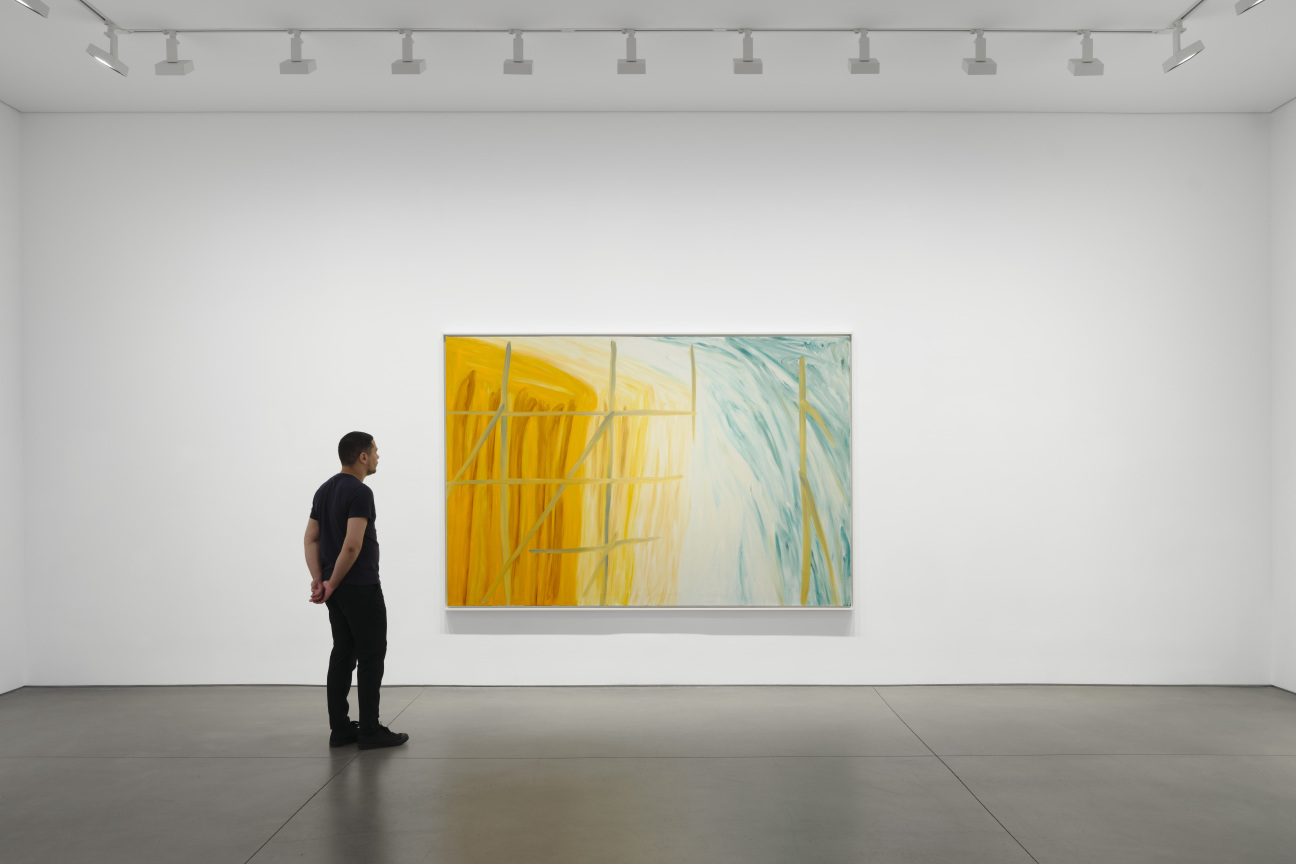
Martha Diamond
David Kordansky Gallery | 520 W. 20th Street
Through June 14, 2025
Fifty years after Georgia O’Keeffe painted a blinding sun peeking out from behind the edge of the Shelton Hotel, bleaching the Midtown Manhattan skyscraper’s top floors with its halo, Martha Diamond gave us the similarly glorious canvas White Light, 1986. The artist’s high-altitude image of the city—an unidentifiable building transformed by a related exhilarating optical effect—is more abstract, larger, and rendered in a simpler palette (mustard, teal, titanium dioxide) at a very different speed. It’s one of several paintings and studies in the 11-work posthumous show “After Image” at David Kordansky Gallery that feature buttery armatures of brusque wet-on-wet lines over fields or flurries of slashing and arcing gestures. (Diamond, a quintessentially New York artist who died in 2023, moved into her Bowery studio in 1969, and painted there for the rest of her life.)
To read the words “white light” (even as a title on a checklist) is, for me, to reflexively intone “white heat” in response, after the Velvet Underground’s 1968 song, that jangling, droning, feedback-y paean to injecting methamphetamine in Warhol’s New York. And maybe between these two reference points—the heady Machine Age modernism practiced by O’Keeffe before she settled in the desert, and the blank wonder of the greatest work of art on the subject of the skyscrapers (Warhol’s 1964, eight-hour static shot of the Empire State Building)—we can locate Diamond’s own attitude toward the city, if not her style. Her particular, intoxicating ferocity is like a super strain bred from the best of the Ninth Street painters—sort of. In truth, Diamond’s dazzling light and bravura brushwork, while they bring countless things to mind, make for a body of work like nothing else.—Johanna Fateman
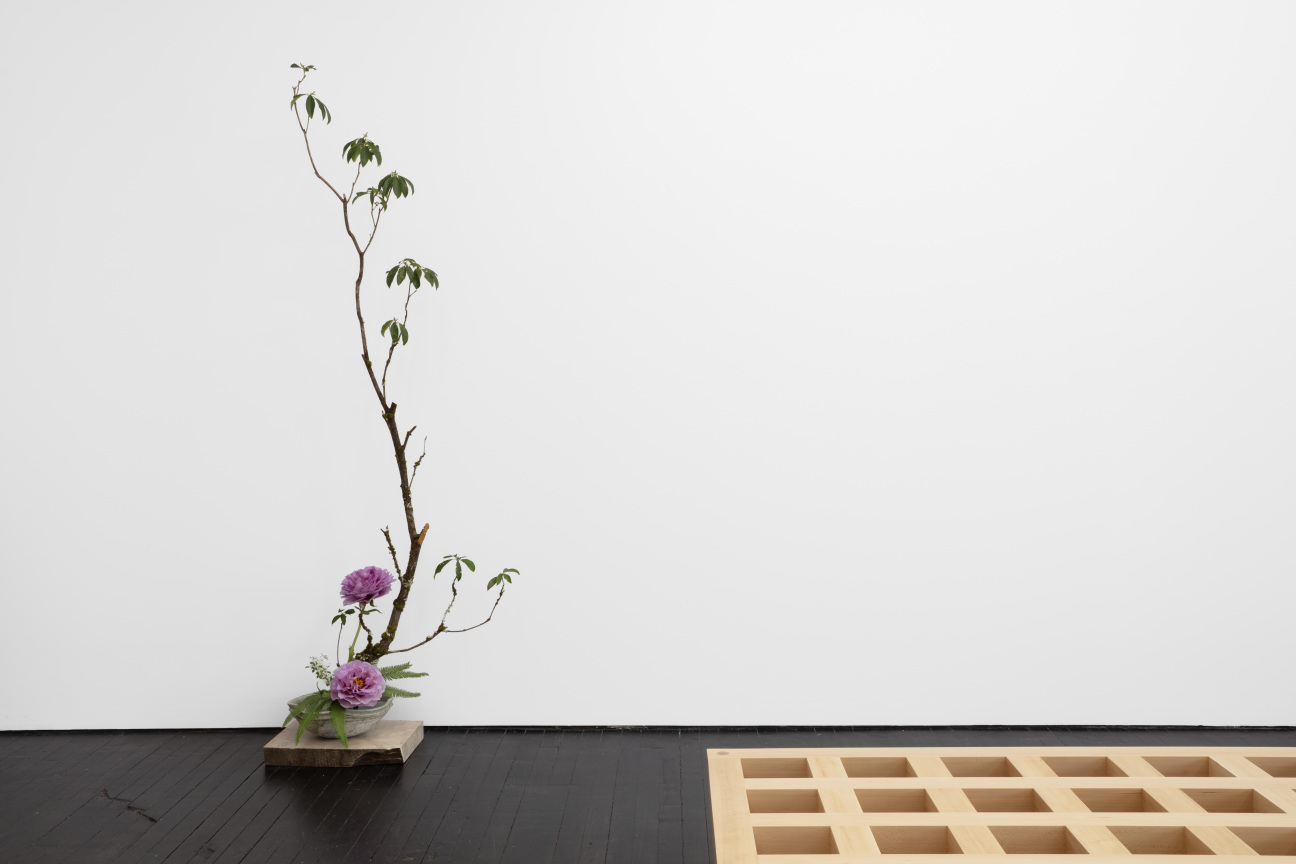
“Jenni Crain” and “Untitled Exhibition (for Jenni)”
Gordon Robichaux | 41 Union Square West, #925 and #907
Through June 15, 2025
The pair of shows at Gordon Robichaux document a community or scene centering around the life and work of Jenni Crain, who died in 2021 at the age of 30 from Covid-related complications. The exhibitions celebrate a life in art, and provide a glimpse behind the curtain: Rather than focusing on a single artist, they highlight the person-to-person connections, support, and affection that make art possible.
Spread across the gallery’s two ninth-floor spaces, the exhibitions effectively merge into one, anchored by Crain’s Untitled, 2021/2025, a sculpture fabricated posthumously from her detailed plans and designs made for the gallery’s space before her death. Two minimalist rectangular grids made of pristinely finished basswood rest horizontally in a tiered stack. The work, with its roughly 105-by-90-inch footprint, occupies much of the floor, leaving just enough room for a wheelchair’s circumnavigation. It’s joined by an ikebana work by Kan Asakura, which brings the fragility and dynamism of living matter into affecting contrast with the precise geometry of Crain’s grid. When I was there, spring flowers had wilted but remained, while new buds were emerging on top of the tall, central plant.
The bigger gallery down the hall offers a lively complement to the other’s quietly elegiac air. Yoyo Friedrich’s humble painted grid, made from a disassembled wooden fruit crate—my favorite work in the show—is like a cross-pollination of Crain’s sculpture and an Agnes Martin painting. This chimes with Miles Huston’s also wall-based, cardboard fruit-box assemblage, and it fits neatly, somehow, with a nearby Lee Mary Manning collage-photograph featuring close-ups of bricks. The two aluminum balls removed from the red velvet-lined compartments of Nick Fusaro’s sculpture on the floor, can be found elsewhere in the galleries—a mischievously playful detail. Rather than a somber memorial, the exhibitions form a joyous gathering, with the beloved Crain its gracious host.—John Vincler



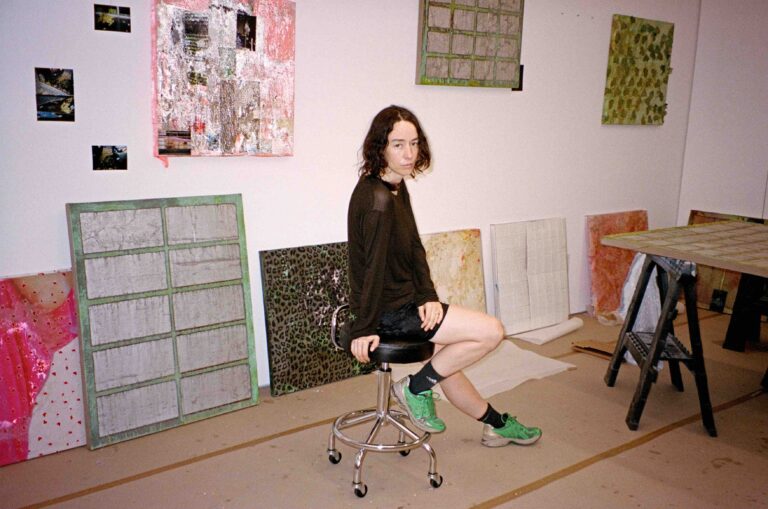


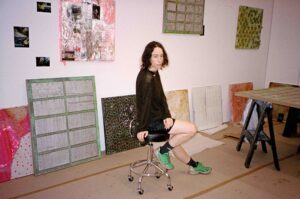



 in your life?
in your life?